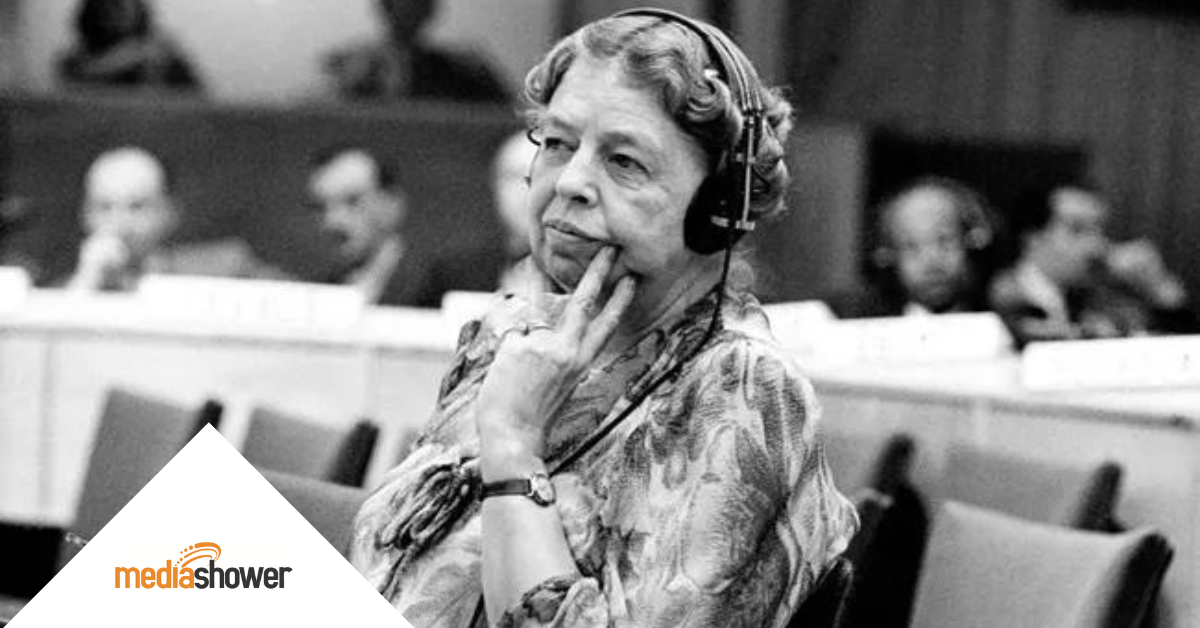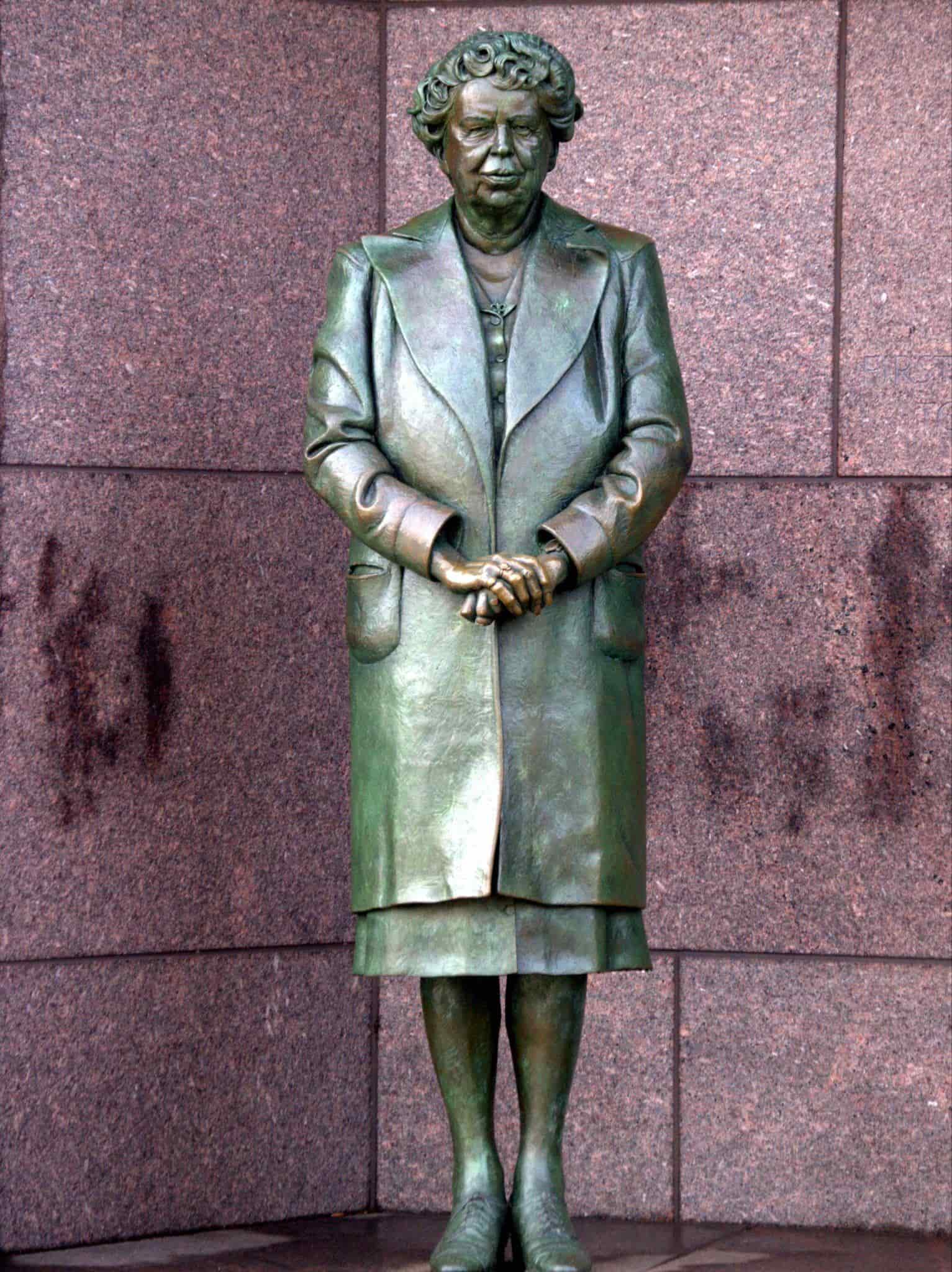
TLDR: Delivered in the aftermath of World War II and the atrocities of the Nazi regime, Roosevelt’s speech on Universal Human Rights emphasizes the importance of a universal standard for human rights. Roosevelt draws parallels between the UDHR and historical documents like the Magna Carta and the Bill of Rights, elevating its significance. She uses emotional appeals to underscore the moral imperative of human rights and portrays the UDHR as a reflection of shared global values, setting a new bar for humanity.
So What? Eleanor Roosevelt’s speech was not just about adopting a document but a call to action for the world to recognize and uphold human rights universally. By connecting the Universal Declaration of Human Rights to historical milestones and emphasizing its moral weight, Roosevelt championed that human rights are essential for everyone, transcending politics and borders. Her passionate advocacy set a precedent for global unity; here’s what great communicators can learn.
Eleanor Roosevelt’s speech on the adoption of the Universal Declaration of Human Rights was perhaps the culmination of her tireless work in the political arena of rights for minorities, women, and others in the years during and following World War II. This speech, delivered to the United Nations on December 9, 1948, is often considered a landmark achievement in the global effort to promote and protect human rights. In it, Roosevelt highlights various nations’ collective history and obligations in its formulation and acknowledges the challenges faced in reaching a consensus.
Picking Up the Pieces After the War
There is a fair bit of political housekeeping that goes into the earlier parts of this speech. Even though it was formulated in the shadow of the war and Nazi atrocities, the document was still an artifact of negotiation. Not every nation was fully satisfied with every provision, specifically anything that suggested political obligation on the part of a country. Roosevelt addressed this concern, specifically, the amendments proposed by the Soviet delegation, which had been previously discussed and rejected.
It’s a nod to the nature of the text–it isn’t a binding agreement on the politics of any single country. She states that the delegations present must
“Keep clearly in mind the basic character of the document. It is not a treaty. . . it is a Declaration of basic principles of human rights and freedoms, to be stamped with the approval of the General Assembly . . . to serve as a common standard of achievement for all peoples of all nations.”
This isn’t lip service; as Roosevelt continues,
“The realization that the flagrant violations of human rights by Nazi and Fascist countries sowed the seeds of the last world war has supplied the impetus for the work which brings us to the moment of achievement here today.”
By evoking the horrors of the recent past, Roosevelt underscored the urgent need for a universal human rights standard without having it be a political football. This emotional appeal was a powerful reminder of the consequences of neglecting human rights. It resonated deeply with an audience still grappling with the aftermath of the war, emphasizing the UDHR’s role as a preventive measure against future atrocities.
Using History to Make Human Rights Inevitable
Bridging the past into the present is a tactic that Roosevelt repeatedly uses in the speech. Later, she likens the Universal Declaration of Human Rights to the Magna Carta, the Declaration of the Rights of Man, and the Bill of Rights as achievements towards liberty and freedom for all:
“This Universal Declaration of Human Rights may well become the international Magna Carta of all men everywhere. We hope its proclamation by the General Assembly will be an event comparable to the proclamation of the Declaration of the Rights of Man by the French people in 1789, the adoption of the Bill of Rights by the people of the United States, and the adoption of comparable declarations at different times in other countries.”
Roosevelt elevated the Declaration’s significance by drawing parallels between these foundational documents and the UDHR. It isn’t simply an agreement but rather a document that can fundamentally alter history and the ideas that humankind takes forward–ideally, in a way that avoids the massive conflict that had just recently ended.
Using the Moral Imperative of Human Rights to Argue for Them

With the weight of history and collective action on the table, Roosevelt continually uses pathos to grab her audience. Our moral obligation weights the call of history (she argues) to empower men, women, and children worldwide with these rights:
“This Declaration is based upon the spiritual fact that man must have the freedom to develop his full stature and through common effort to raise the level of human dignity.”
Human rights are human rights and are not only meant for everyone but essential to everyone. As such, it is the duty of those in her audience to attend to them.
Human dignity and freedoms are, in many ways, abstract without direct action or responsibilities tied to them. And, perhaps expectedly, many countries in the nascent UN resisted the notion of anything that would tie them down politically. Roosevelt uses a universal language of freedoms and rights that anyone would agree with to sidestep this issue. Not that her speech halted negotiations, surely. But, it did give the weight of morality to their arguments, a weight that could not, in the aftermath of decades of war in Europe, be so easily forgotten.
And by emphasizing the collective consensus and moral responsibility behind the UDHR, Roosevelt established its credibility. She portrayed the Declaration as a product of global unity and moral imperative. This appeal to pathos reinforced the idea that the UDHR was not merely a political tool but a genuine reflection of shared global values and aspirations.
Setting the Bar Higher for Humanity
All in all, the UDHR wasn’t a treaty, nor a law. But it was a massive step forward. Before this, the notion of articulating, through a global body, an idea of human rights that would transcend nationality, race, or gender was unheard of. It took years of war and reflection to get there… and, in many ways, it took someone as passionate and committed as Eleanor Roosevelt to put that stamp on human history. With pathos, a sense of history, and a clear understanding of how to communicate the necessity of massive action, she did just that.
If you need help crafting powerful messages, reach out to the team at Media Shower, who can help you change the world. Click here to try Media Shower’s award-winning content platform for free.
